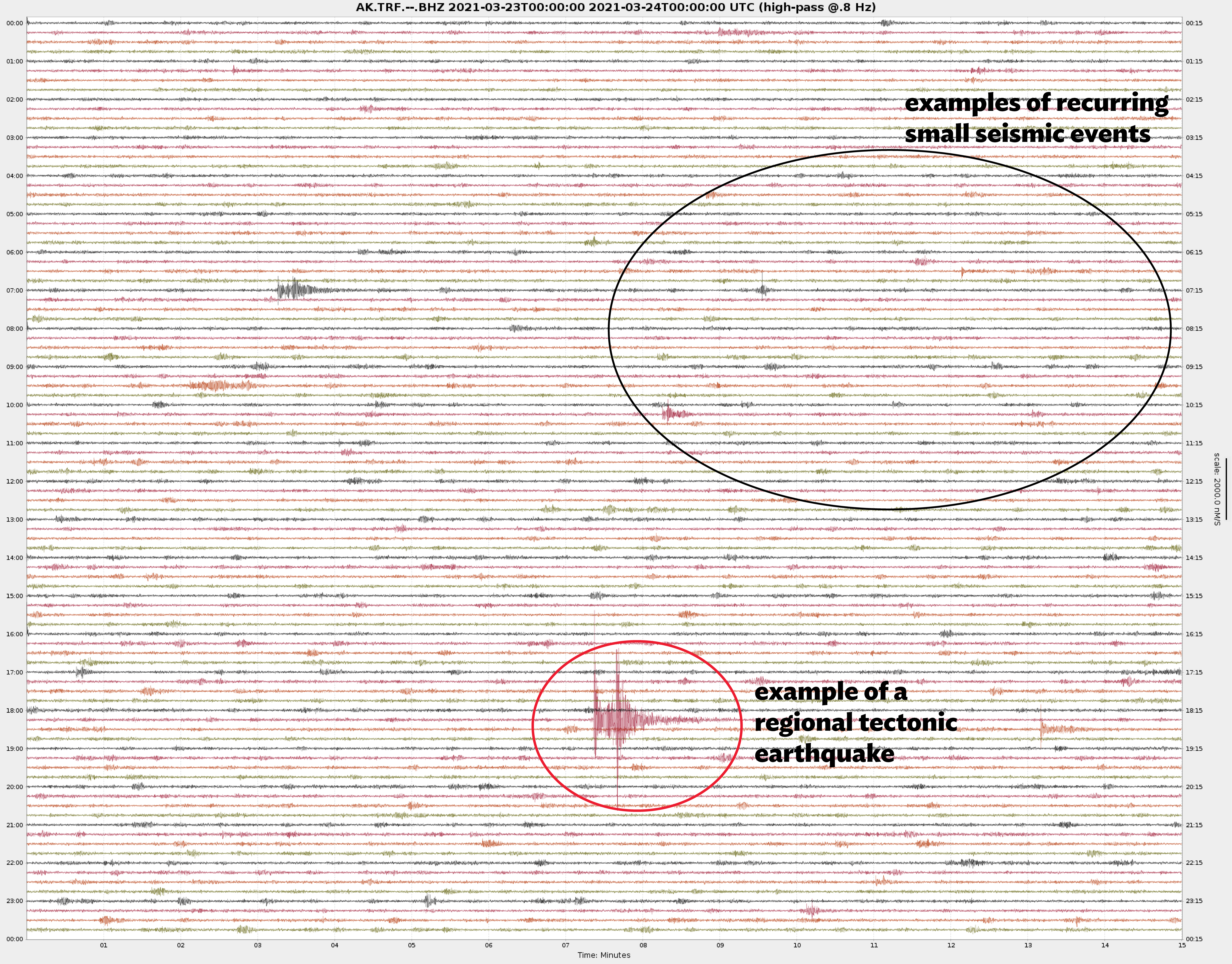The Alaska Earthquake Center has operated station TRF on Thorofare Ridge, near Eielson Visitor Center in Denali National Park, since 1989. In 2003, the instrumentation was upgraded to a high-quality broadband sensor installed in a surface vault, and in 2016, the site was upgraded again with the sensor installed in a borehole. The borehole installation resulted in clearer data, allowing smaller signals to be more easily identified. All data from the site is transmitted in real-time to the center in Fairbanks.
Earthquakes are commonplace in and around Denali National Park. Seismicity in the region is driven by subduction of the Pacific plate beneath Alaska. The subducting Pacific plate reaches depths around 150 km beneath Denali and is responsible for frequent deep earthquakes. The Denali fault bisects the park and has been responsible for historically large earthquakes, including the 2002 magnitude 7.9. The Kantishna Cluster, in the Kantishna Hills northwest of Denali, is a persistent source of earthquakes averaging a dozen or more locatable events per week.
Earthquake signals stand out in seismograms such as the one for TRF shown here. The signal circled in red is an example of a regional tectonic earthquake. The black circle highlights events that are localized to station TRF and lack distinct P- and S- wave arrivals that are typical of a tectonic source. These signals began showing up at station TRF in December 2020, around the time that the Muldrow Glacier is believed to have begun surging, and appear persistent throughout the data.

During this period the frequency content for station TRF has shown an anomalous signal best observed in the range of 2-8 Hertz. Local earthquakes often have notable signal above 10 Hz, whereas teleseismic earthquakes (further than 1000 km away) are often dominated by signals below 1 Hz. The anomalous signals recorded at TRF fall in between those two ranges.
The strength of this seismic signal can be compared over long periods of time by tracking the typical daily energy level in the frequencies of interest. (Technical description of the methodology can be found here.) The figure below shows the strength of this signal at TRF since 2019 at frequencies of 2, 4, 6, and 8 Hz.
Daily and seasonal (see July-August) fluctuations are normal and occur throughout the history of the site. What is of note is the sharp change that occurred in the first week of December 2020. The signal increased dramatically and the daily fluctuations decreased. The major takeaway is that there is significantly more energy showing up at station TRF. This is a result of the small recurring seismic events presumed to be emanating from the glacier. We see no evidence of comparable seismic activity over the past decade.
Visit the National Park Service webpage for more surge information and other types of monitoring.
Daily seismic power at station TRF since 2019. Plot is updated daily, but may lag by a day or two.
Data plots created with the IRIS Data Management Center web services.






